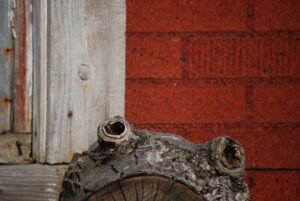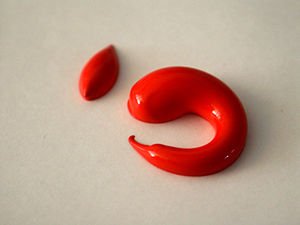My tools and techniques
Like most artists, space is precious as is light. My studio has good lighting and space. I work off a standing table and a couple of easels.
In terms of creature comforts, music, mainly jazz and avant-garde composers, folk and mediaeval music.
And some reference points.
- Turps Banana magazine; a magazine for painters by painters
- Works by and about Abstract Expressionist painters, and interesting modern abstract painters, including China and Japan
- Resources on Mediaeval art, Anglo-Saxon art, illuminated manuscripts.
Paints & Inks
There is nothing wrong with working directly with paint from the tube. I focus on mixing rather than having every colour made so I work with a limited palette.
I keep a colour swatch notebook and a binder of colour cards with pigment codes with the various names and codes paint makers use. The pigment codes themselves help prune the tree as the colour names used by the manufacturers can be misleading so I focus on the pigment codes and quality of the paint itself.

I like colours that break down (fall apart, granulate) so the pigment comes out of solution. I call this homeopathic paint.
I use single pigment paints: my preferences are Golden Heavy Body, Winsor Newton and Daler-Rowney Cryla for their quality and texture. I also like Liquitex and Ara. Japanese Sumi-e (Moon Palace) ink which I get imported from Japan courtesy Amazon and mineral chips for grinding specific colours. Acrylic inks. Opaque Japanese watercolour called Kuretake Gansai Tambi, and Maimeri tube watercolour. Pigment powders.
Applying Paint
I use painting knives, and all my brushes have synthetic bristles except for the hog brushes. I like the big Omega brushes from Italy. I use rags, kitchen towels, silicone brushes.
For Sumi-e, I have a selection of wolf and goat hair brushes in various sizes and some handmade brushes, from Japan and China.
Brush/tool brands: RGM, Omega, Russell and Chapple, Escoda, Robertson, Rafael.
I tend to buy from Jacksons Art in the UK.
Supports
My preference is paper and hard surfaces with tooth.
I work on paper, wood and cotton canvas. I don’t stretch the paper as I have a wooden frame to hold paper in place. I use a wonderful Green Painters Mate tape (hard to find outside North America despite being made by a German company).
Paper, 300 to 850 gsm, is from paper mills (St Cuthberts, Moulin de Larroque). Sumi-e requires very light Chinese and Japanese papers (e.g. ‘rice’ paper, shikishi, xuan) and I buy from China or Japan.
I use wood panels e.g. thin plywood panels cut into various sizes, or found panels. I gesso them sometimes, but often want the paint to sink into the grain. I don’t like MDF or plywood that is too smooth. Think tooth.
I use cotton canvas when I feel like using canvas.
Paper makers: Arches, St Cuthberts, Moulin de Larroque, Japanese/Chinese paper sources such as HMay.
Note/sketch books: ArtGecko or Artway.
Canvas: Russell and Chapple for rolls
Wood: plywood from local DIY or found panels.